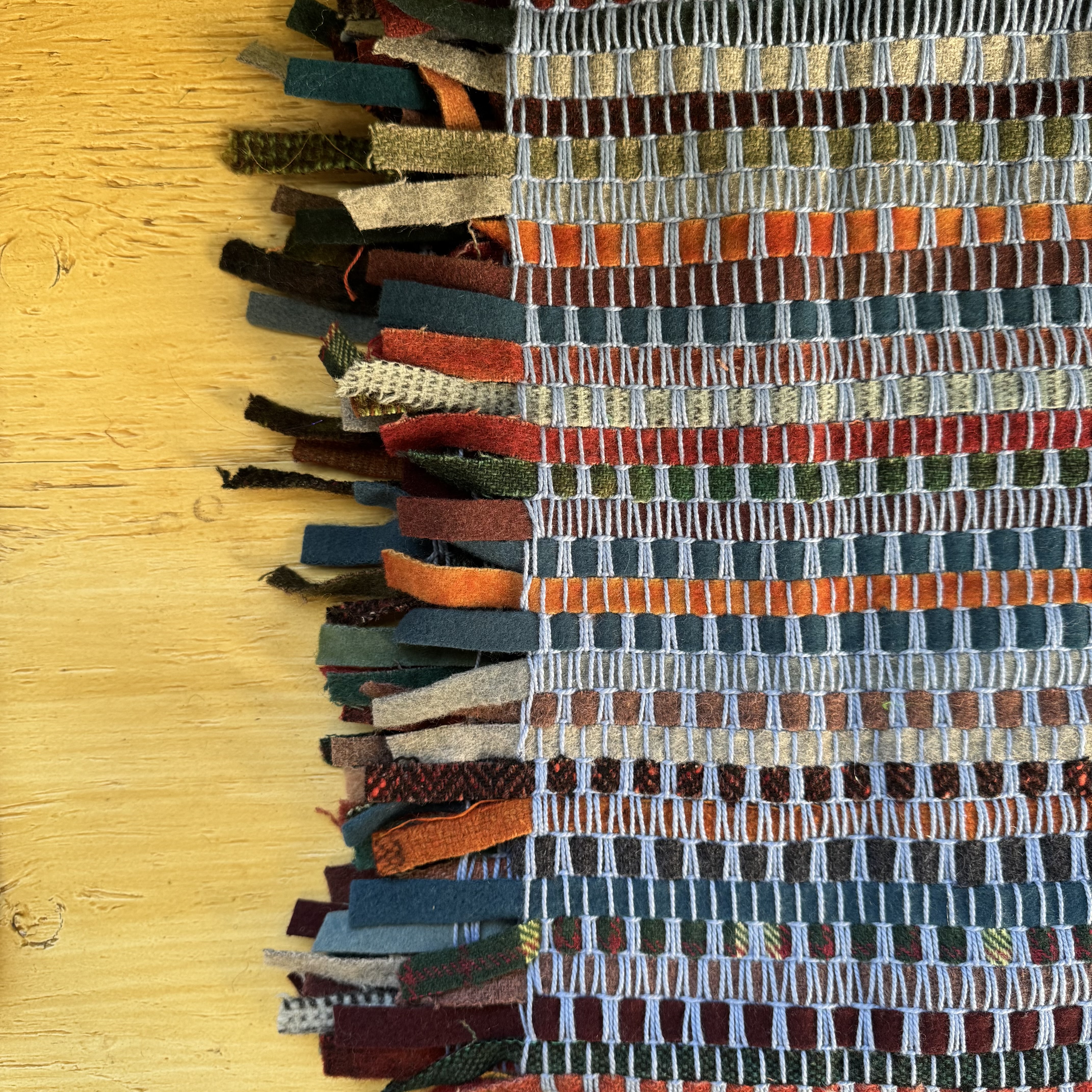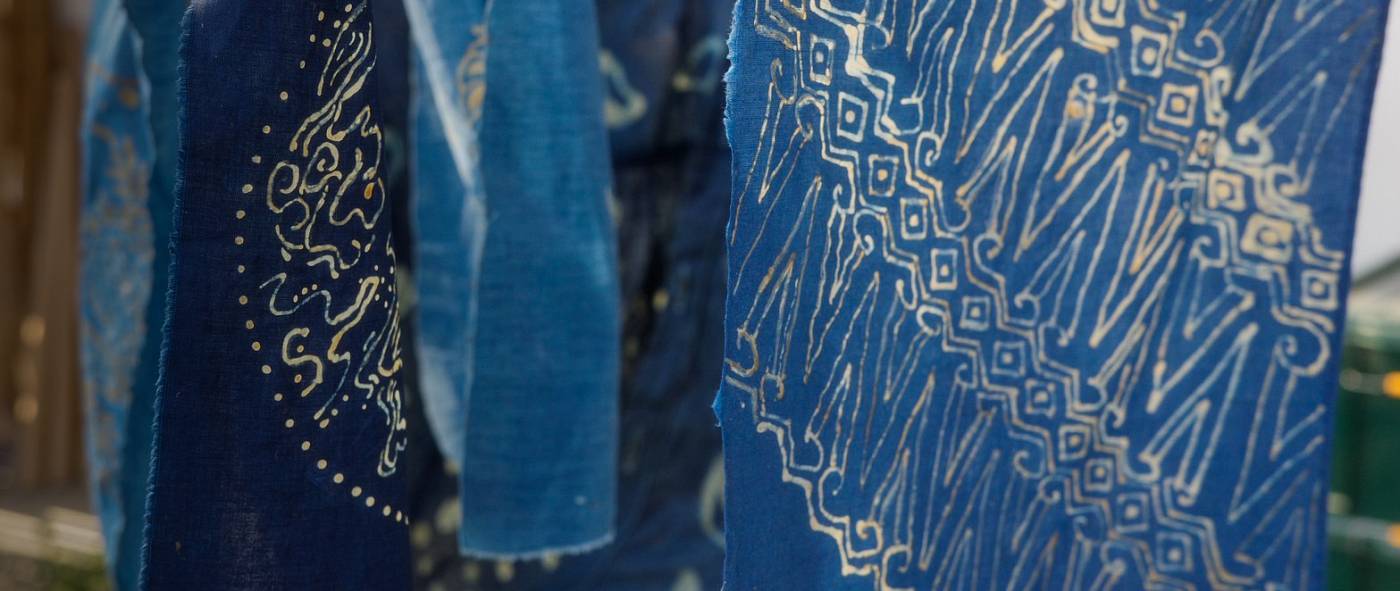
Good Yarn, Bad Yarn
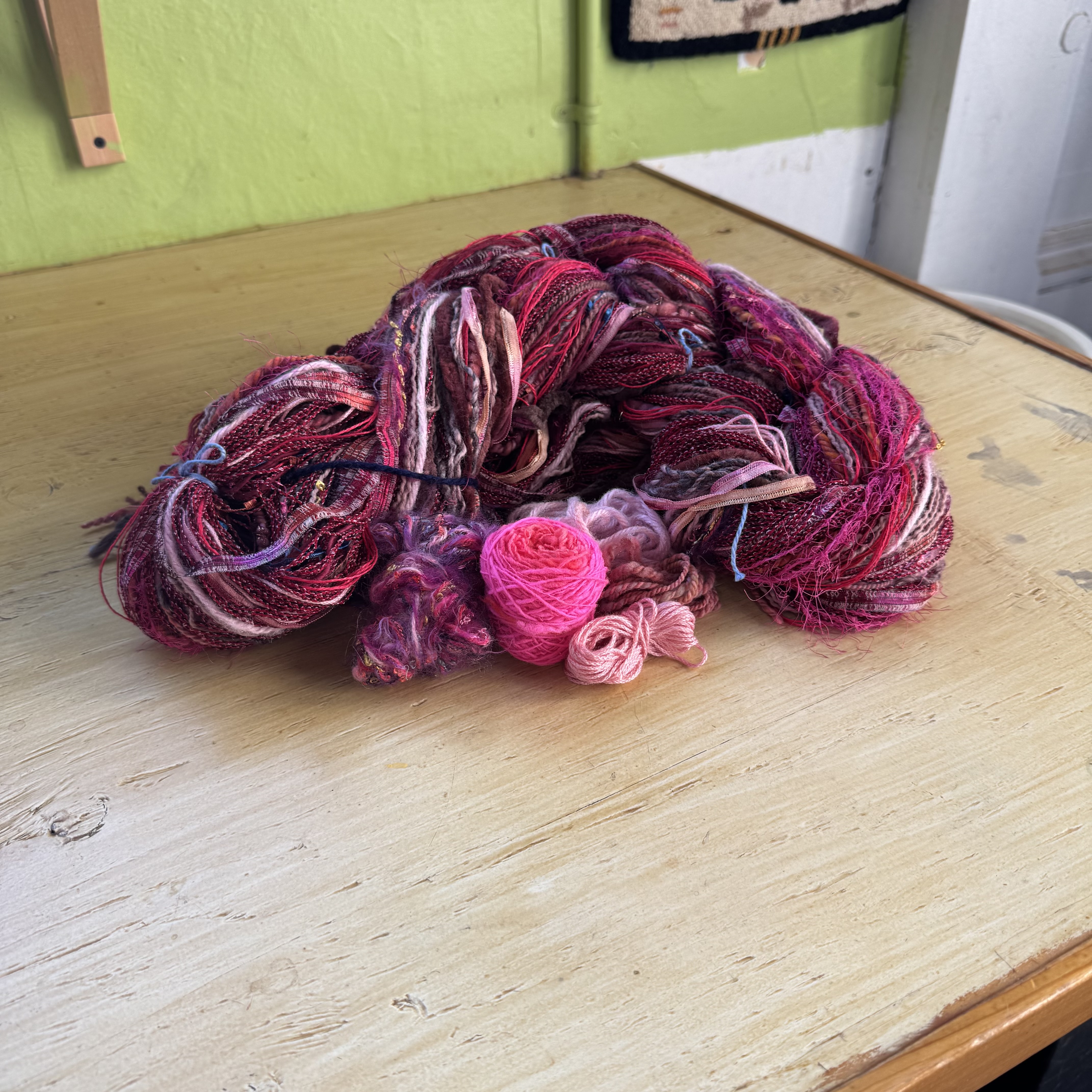
Good yarn, bad yarn: in this blog post, Riley Kleve dives into their stash of novelty yarns and writes about the many surprising uses they've found for "bad" yarn.
Happy 2025! I’m delighted to be through with the busy holiday season. My September through December calendar is typically very packed, with lots of time spent creating and selling my work for holiday markets and traveling out of state to spend time with family. I like to treat January as a hibernation of sorts, working on weaving projects that don’t necessarily have a specified purpose or deadline.
Playing a few rounds of Euchre is an inevitable part of any visit with my parents these days, and Christmas was no exception. When it’s my mom’s turn to deal, she calls out “good cards, bad cards” while passing hands out to her teammate and opponents. This refrain was stuck in my head while I was sorting some new yarn into my stash this week. Good cards, bad cards. Good yarn, bad yarn.
The ebb and flow of what makes a good or a bad yarn has been on my mind a lot lately. I started knitting in the 00s during a major boom for novelty yarns like fun-fur and chenille, which were very cool until they weren’t. Acrylic yarn was exciting and mothproof when it first hit the market, but is often seen as an inferior material full of microplastics today.
Other weavers have been just as conflicted. I’m currently reading some work from Elmer Wallace Hickman, author of New Weaves from Old (1950). He published instructions for combining traditional weaving drafts with commercially available yarns of the 20th century, including some of the first novelty yarns. While he made frequent use of these new materials, including boucles, thick-and-thin yarn, beaded yarns, and metallics, he regarded them as a trend that would eventually recede, writing of his own work, “most of these fabrics are fads, and fads are never lasting. Remember that utilitarian purpose is one prime requisite of art.” With that in mind, I decided to give one of his drafts a try, a waffle weave he titled Jewel Box.
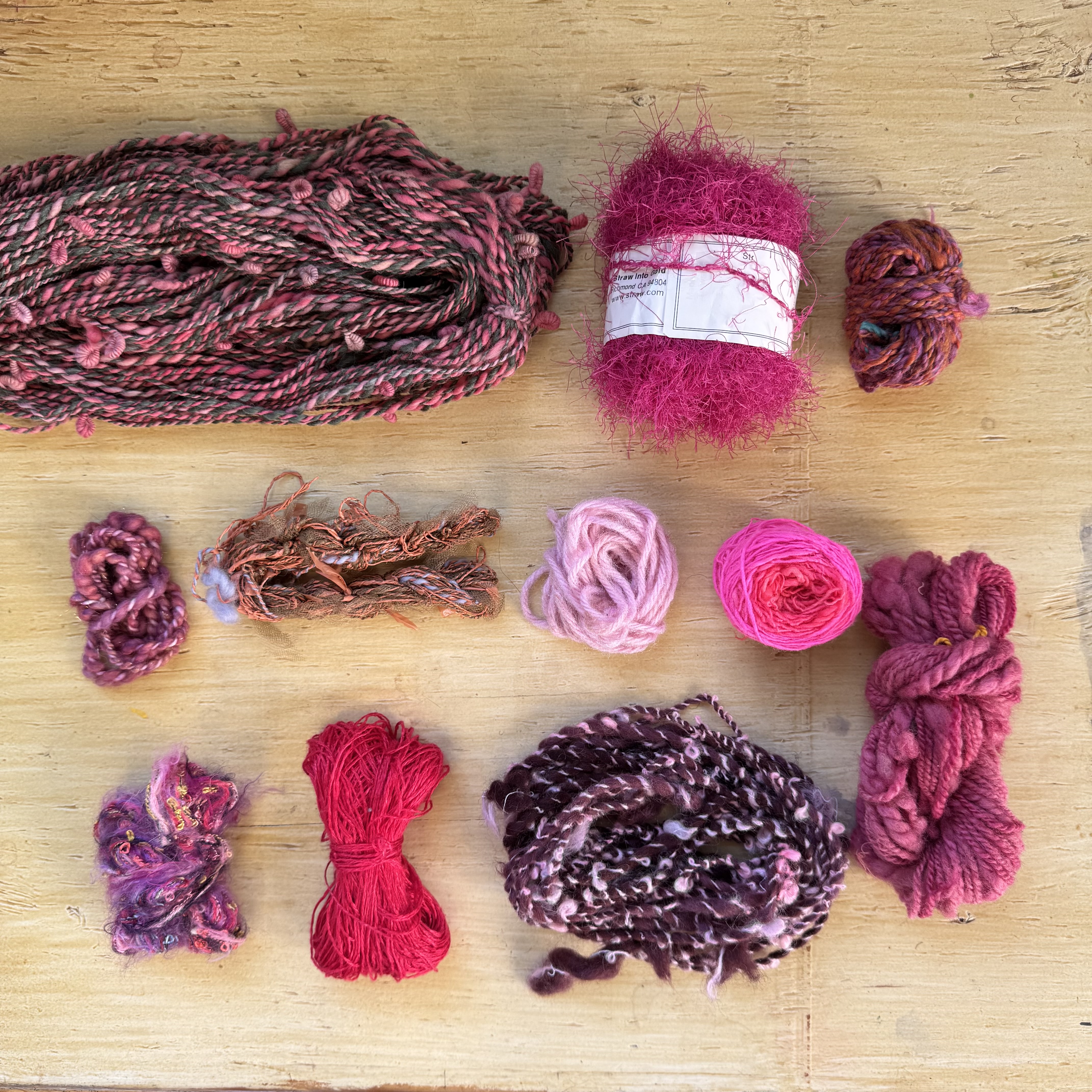
Reaching into my stash for this project, I found an abundance of “good” and “bad” yarns that would be exciting to work with. Hickman’s pattern calls for two types of metallics, one thick and one thin, so I decided to substitute my own variety of “bad” and “novelty” yarns there. I’ve cultivated a stash of yarn over many years, and tend to sort it by color rather than material so that I can pull from yarn from a variety of sources when I am planning a project.
I first needed to choose novelty yarns to add to my warp. Typically, a weaver will use warp yarns that are smooth and strong to withstand the abrasion of weaving. Photographed here are some “bad” yarns I have at my disposal. Clockwise from the top left I have:
- 35 yards of handspun wool with textured loops
- Hot pink yarn from when fun-fur textures were trendy in the early 00s
- Thick 4-ply handspun yarn with a cabled structure.
- 10 yards of thick and thin Rambouillet yarn I spun and naturally dyed with some Cochineal
- A few feet of handspun textured Merino wool yarn with lots of sparkly Angelina fiber blended in
- A few yards of pink and maroon yarn handspun for a thick boucle texture,
- Bright red mystery yarn from my stash made from some sort of wiry cellulose fiber
- An amalgamation of novelty yarns leftover from another weaver’s stash including faux-mohair and a multicolor boucle
- Some yarn I spun years ago from strips of gold tulle fabric and a plastic orange shopping bag
- Baby pink brushed acrylic yarn that’s at least 30 years old
- Some hot pink Merino single-ply yarn I spun last spring.
It might seem like a sea of options, but considering the needs of a warp narrows the field significantly. Some of the handspun yarn is too textured to fit nicely through the parts of my loom that hold the warp in place. Other yarns were filtered out because they aren’t strong enough to withstand the abrasion of weaving–they’d fall apart if I used them in the warp! Of all of the yarns here, only the sparkly textured Merino, wiry mystery yarn, amalgamation novelty yarn, pink acrylic, and the fun fur made it into my warp.
Another recent use I found for some “bad yarn” was in a wall hanging piece I wove just before the holidays. I was pulling from my gray-blue stash bag and came across some Herdwick wool I spun some years ago. Herdwick is a dual-purpose breed of sheep, raised for both meat and wool. If you’re wondering why you haven’t heard of the breed before, it’s because the fiber is very coarse and better suited for rugs than clothing. I didn’t spin nearly enough of this yarn for a rug, so it’s been sitting towards the bottom of my stash for years, waiting for a good use. Some other yarn from the same stash bag didn’t make it into the piece–the blue handspun on the top wasn’t quite the right color, the lilac handspun in the middle had too many small textural bits that I didn’t want to get lost in the piece, and the gray boucle yarn at the bottom was thinner than I was looking for.
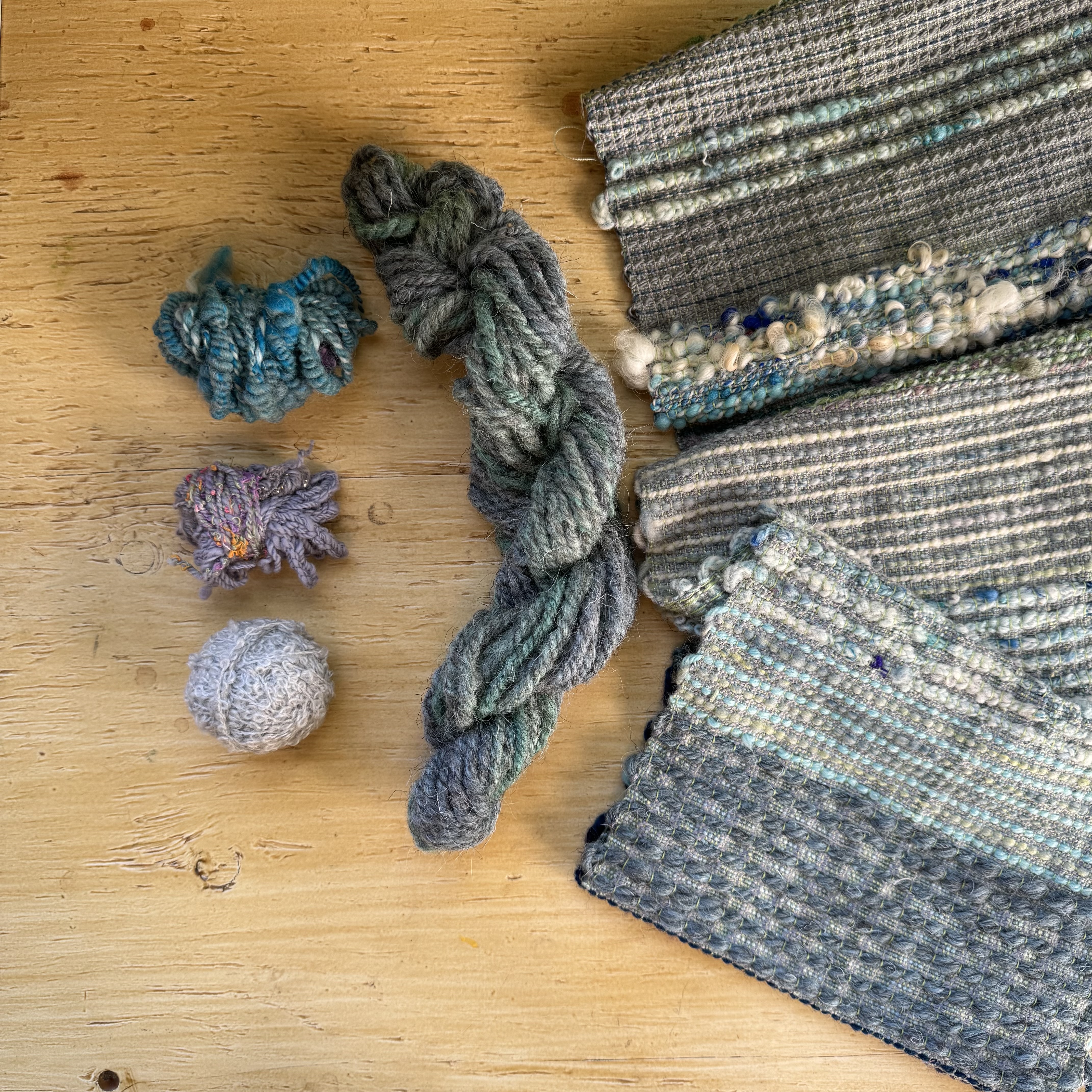
On the other side of the coin, there are also times when a “good” yarn is actually not well-suited for a project. For instance, I spun some very fine Merino wool into thin yarn for a pair of mittens (the pattern is “Mod” by Kirsten Kapur). They’ve been my daily mittens for a few winters, but if I were planning them again I would use different yarn for a couple of reasons. First, the colors are not very high contrast, so the colorwork pattern is tricky to see. Second, the Merino fibers are so soft that they have a hard time staying in the yarn. In other words, they’re constantly pilling with even the slightest abrasion. Not ideal for daily mittens!
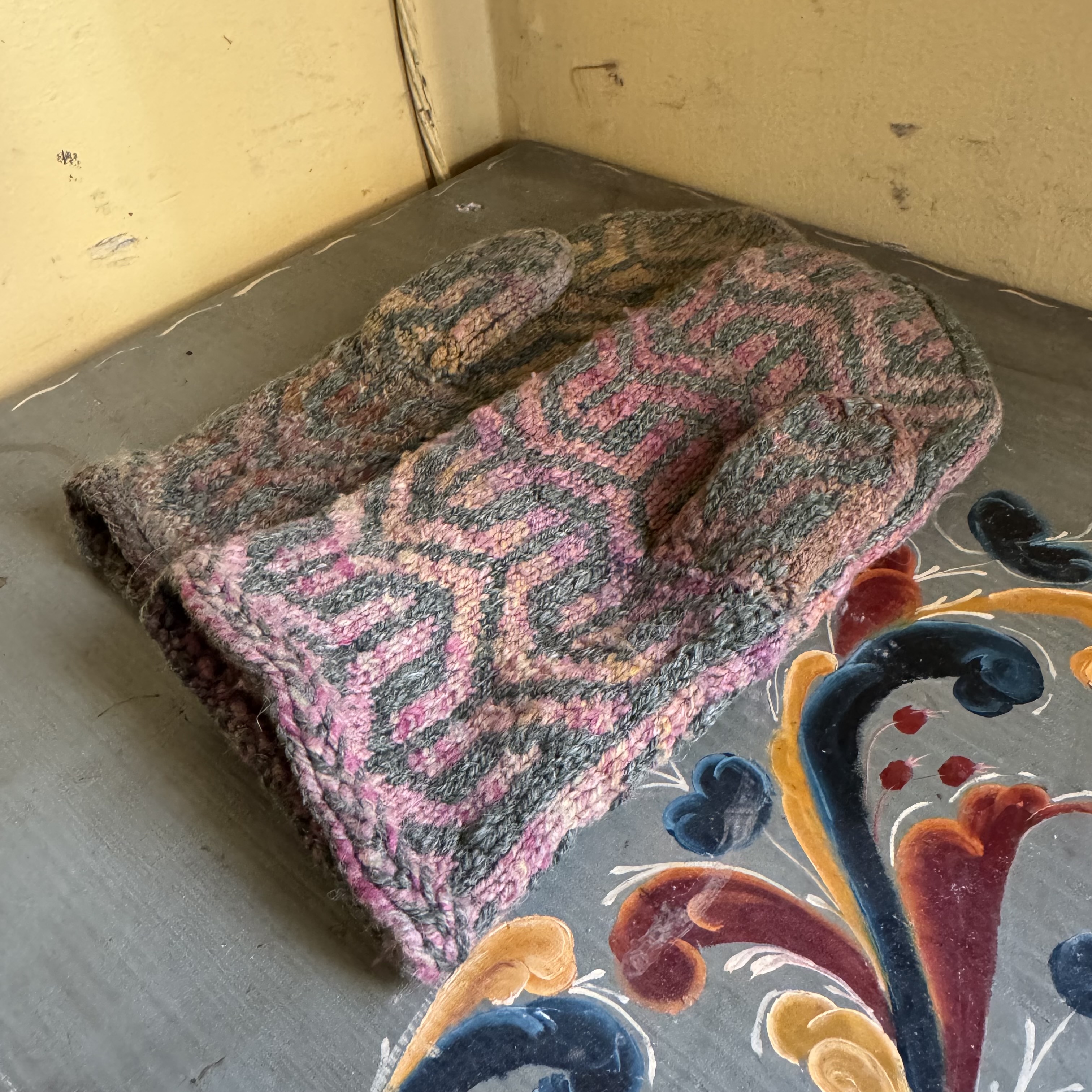
Finally, I’ve found that even non-yarn materials can make their way into the good yarn-bad yarn debate. I used strips of wool cut from worn-out jackets and blankets for this table runner piece from a few months ago, and while they would make terrible yarn to knit or crochet with, they worked very well in the context of a flat piece of woven decor that won’t see much abrasion.
